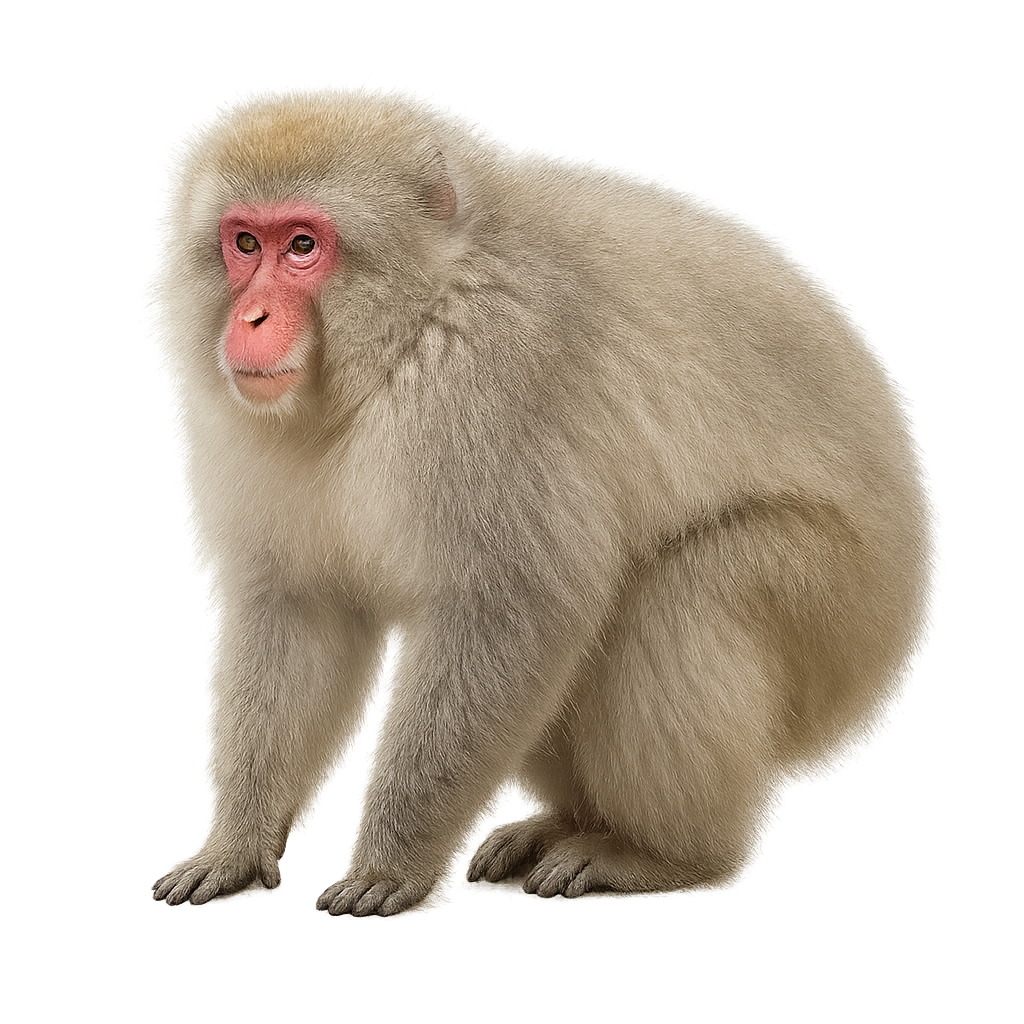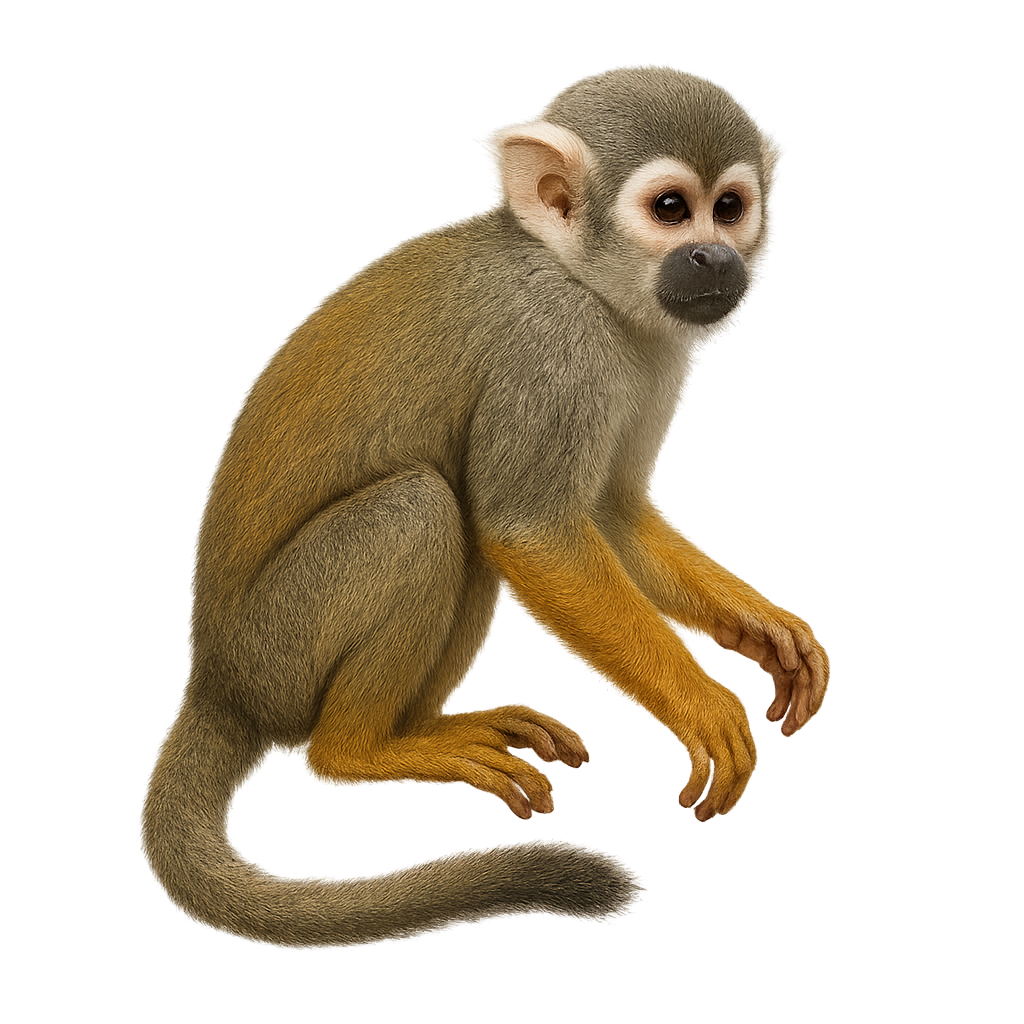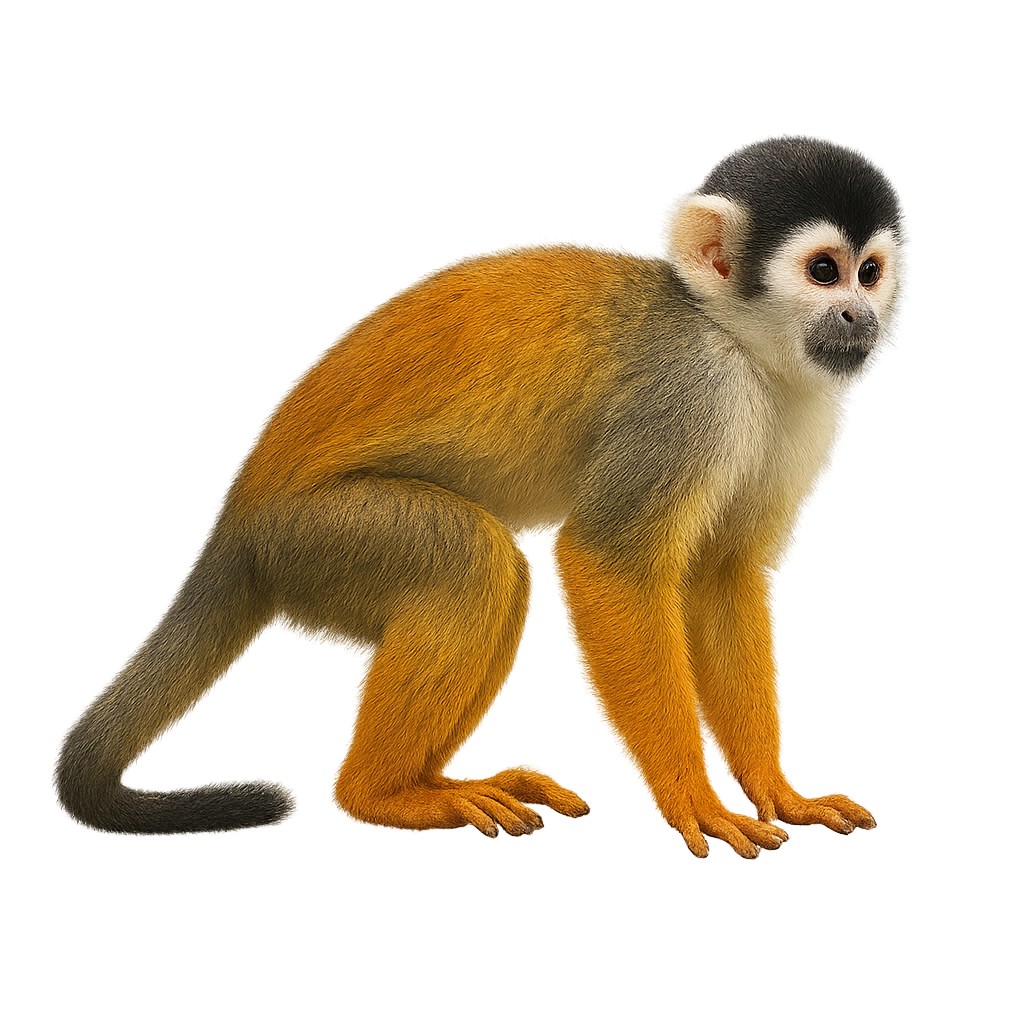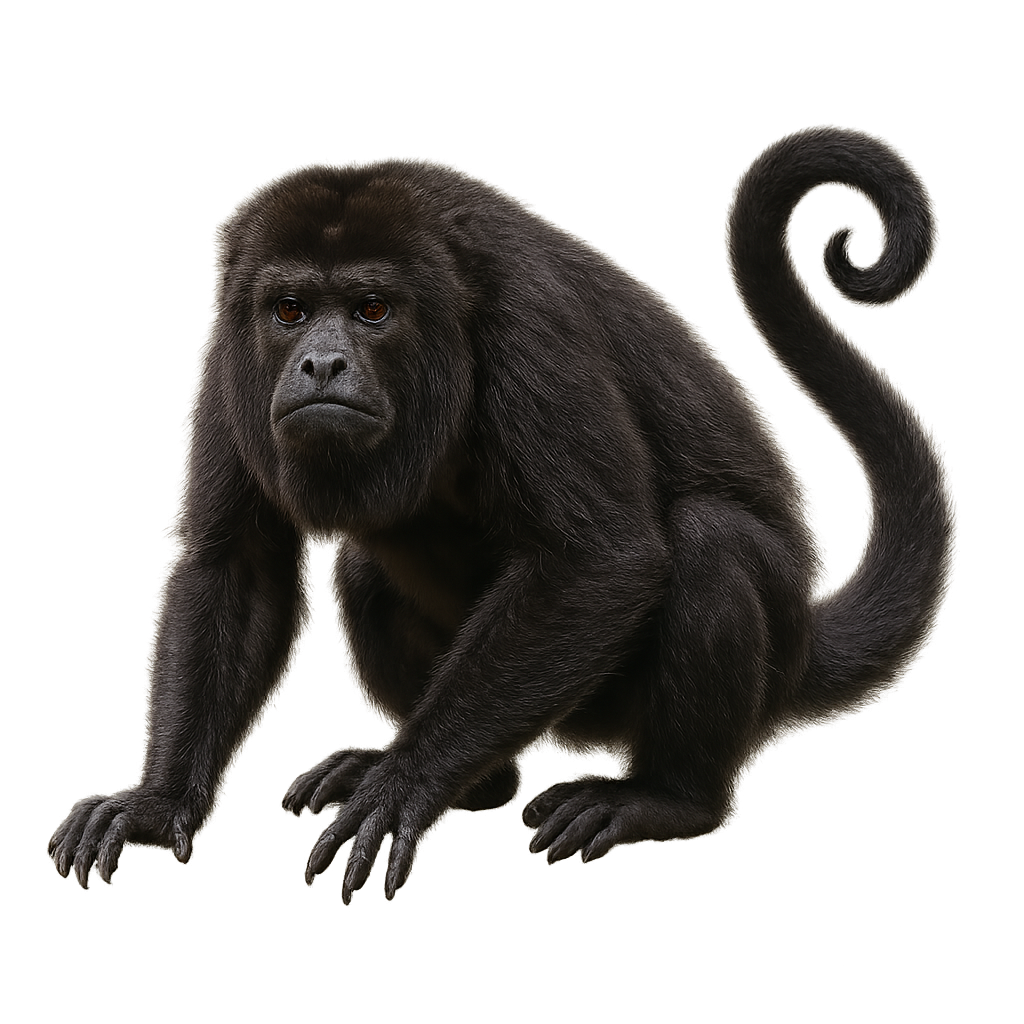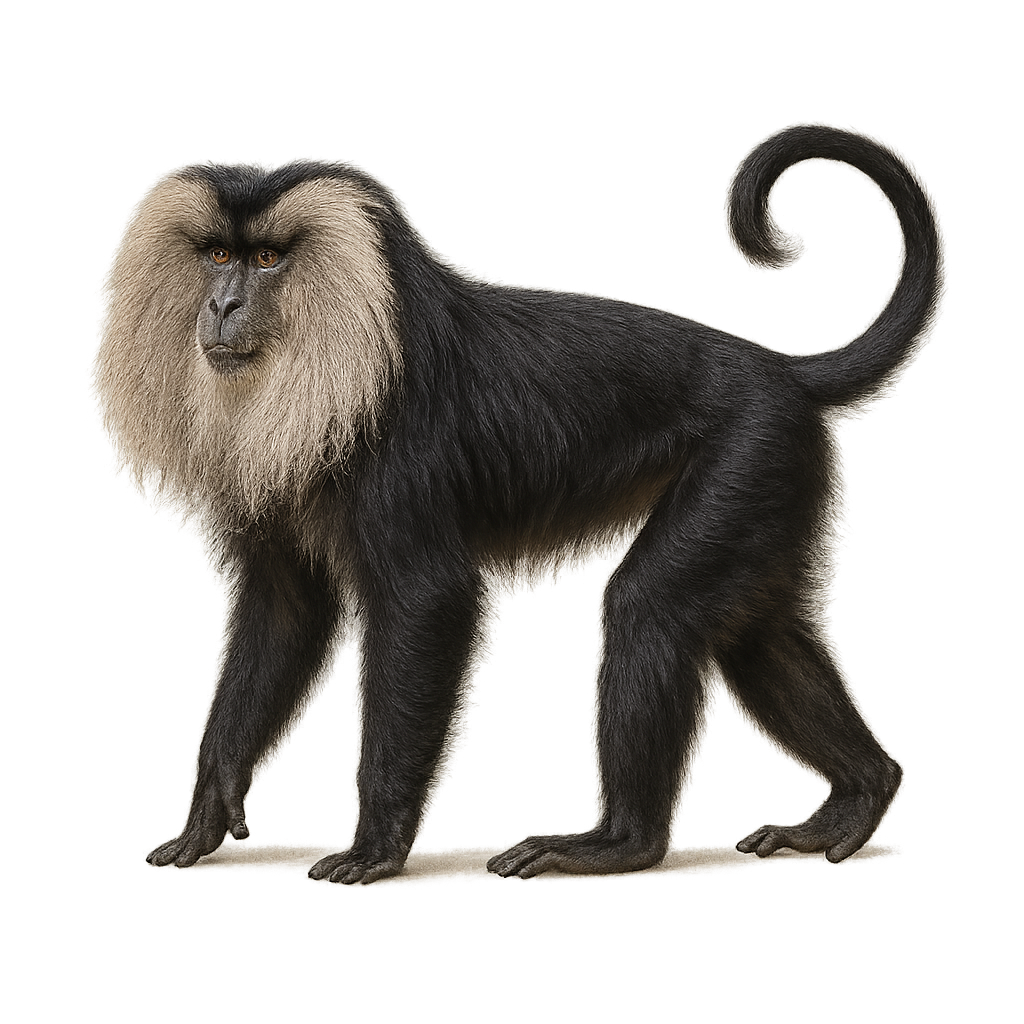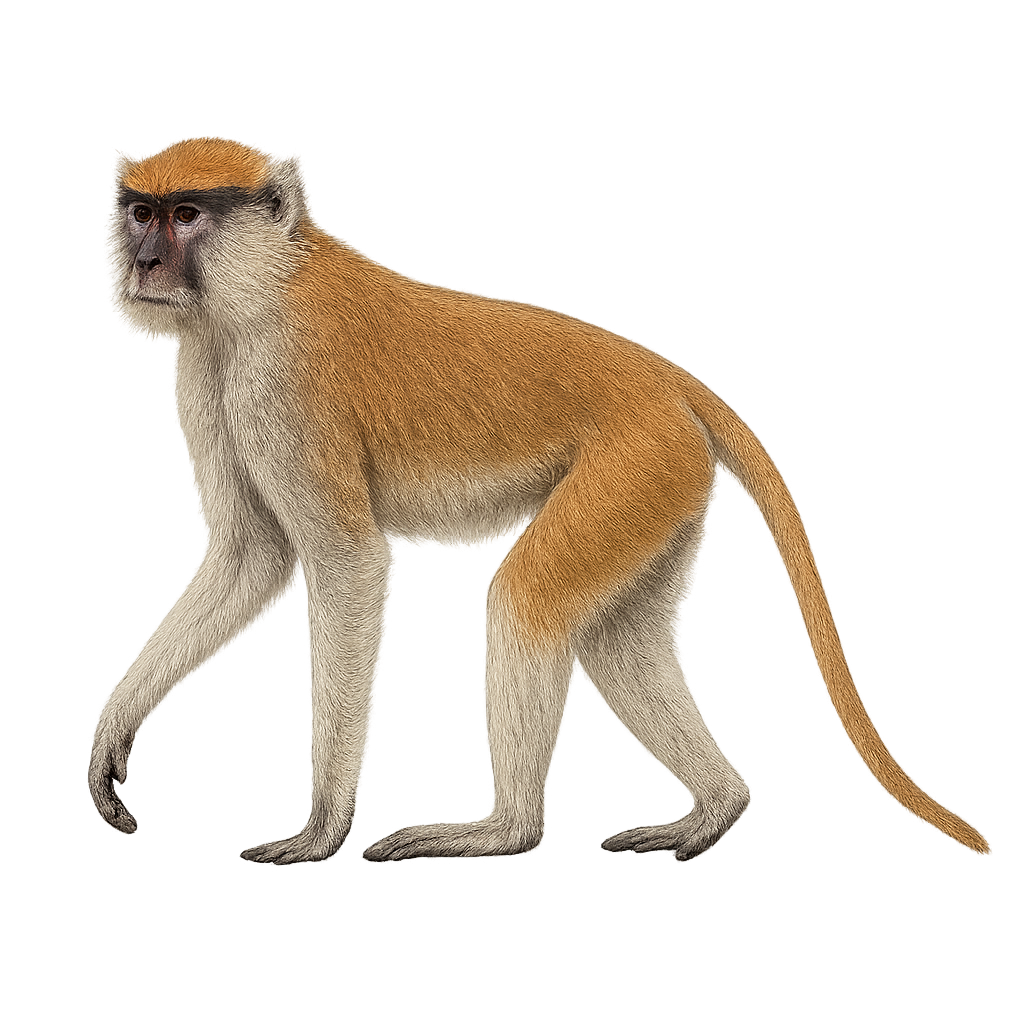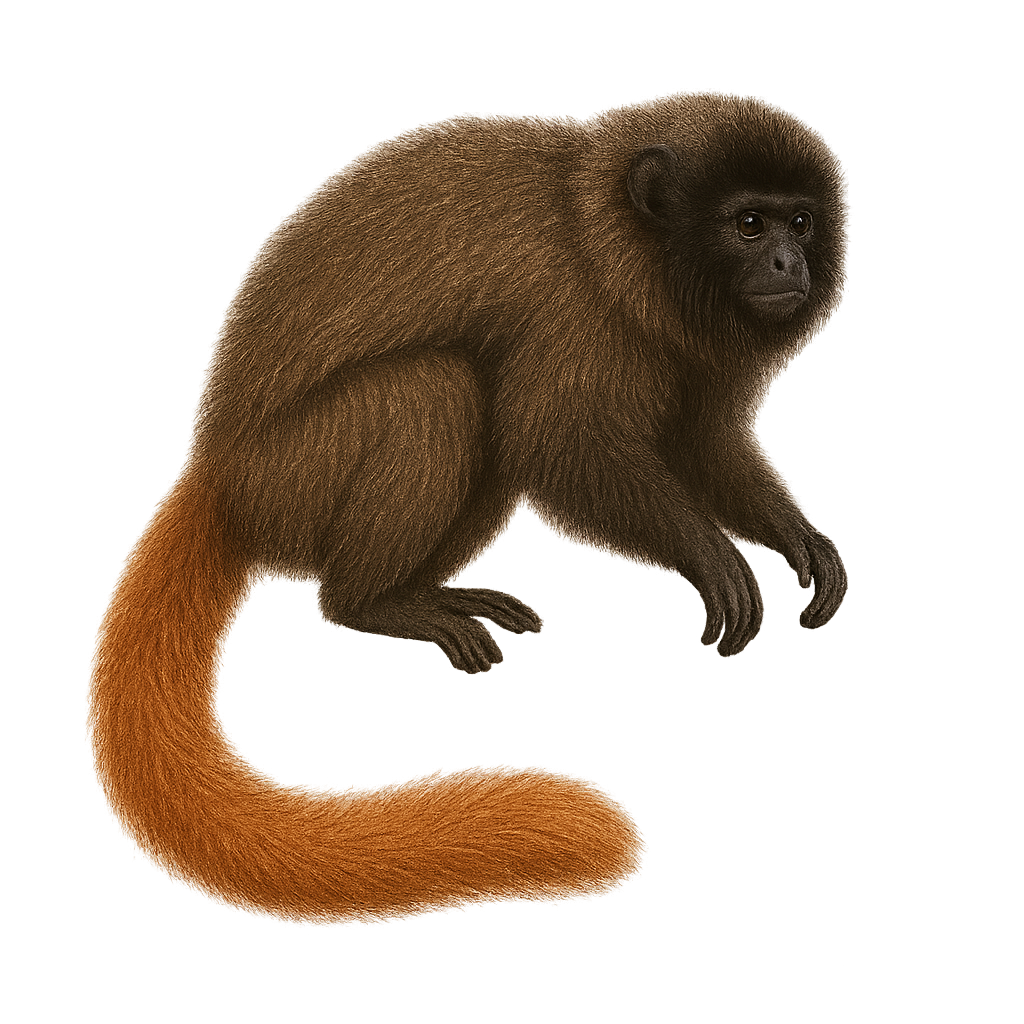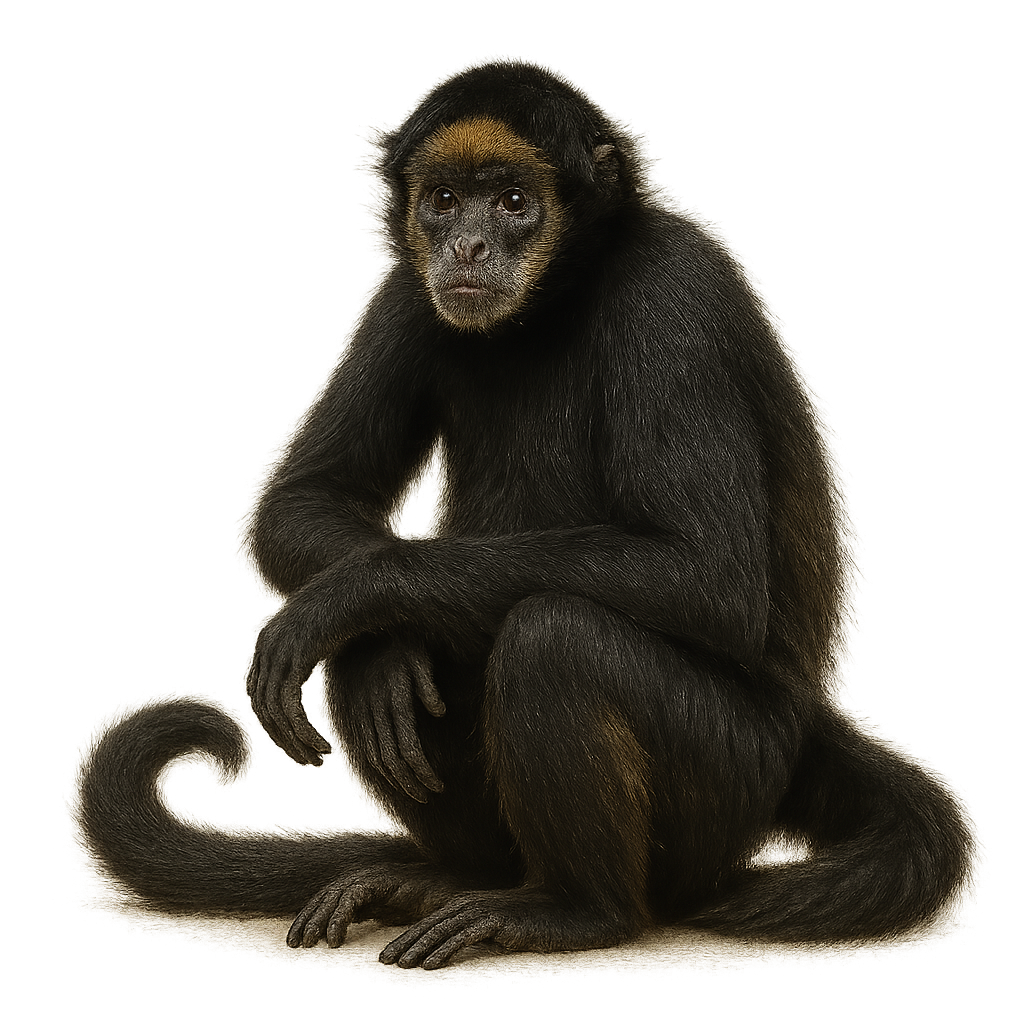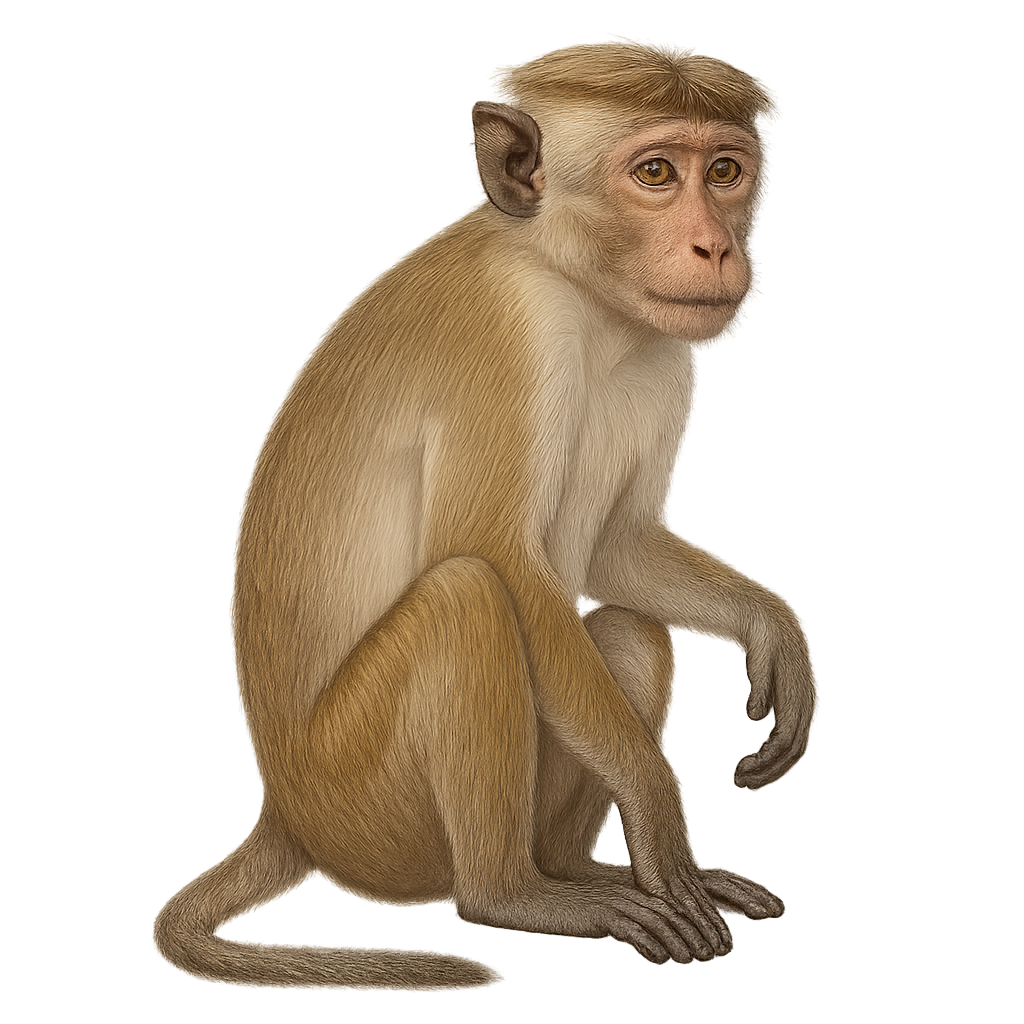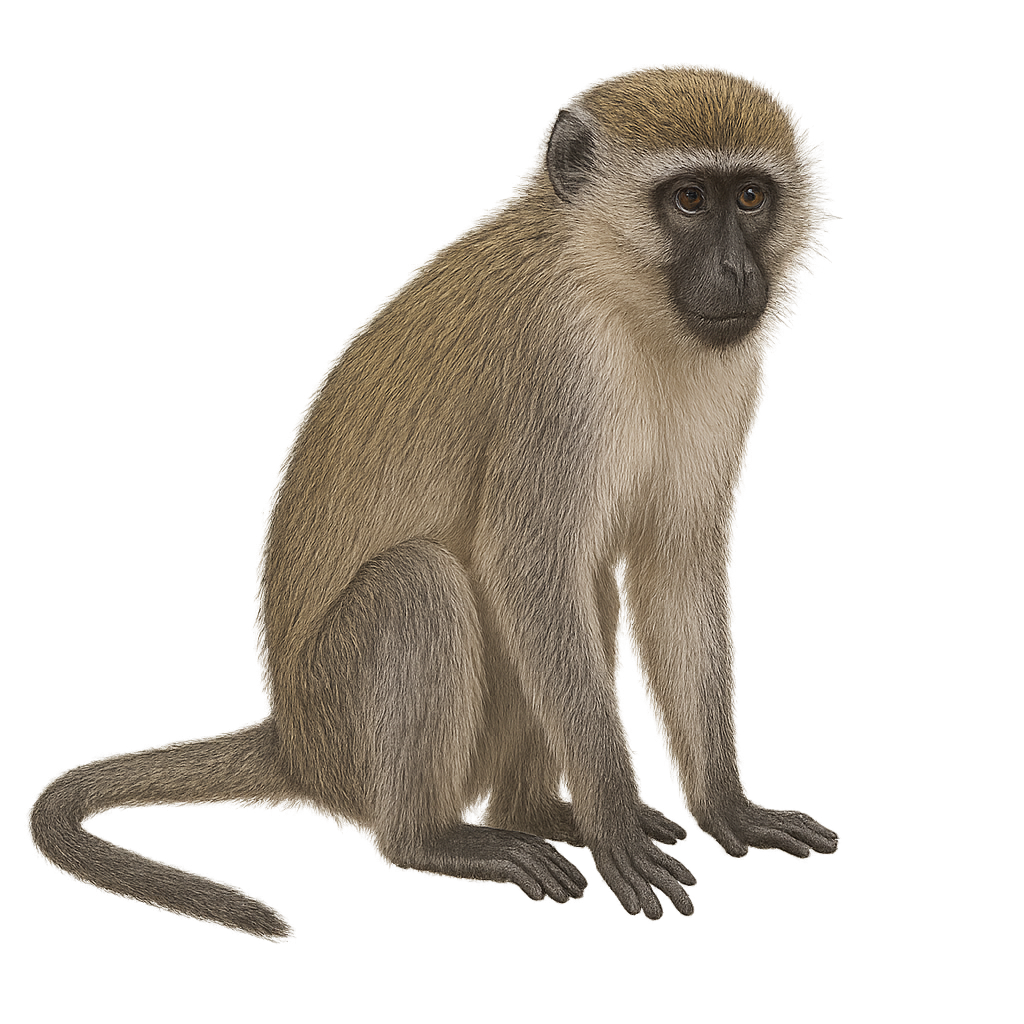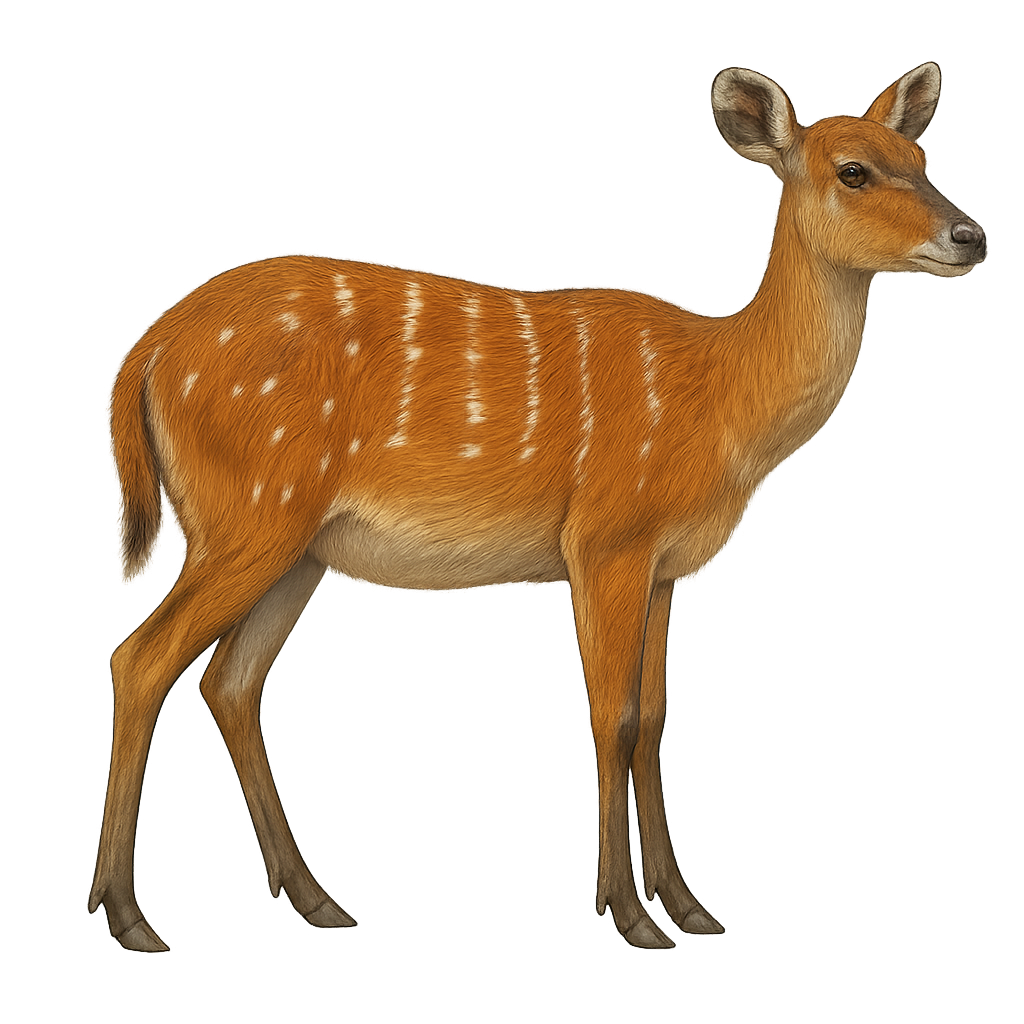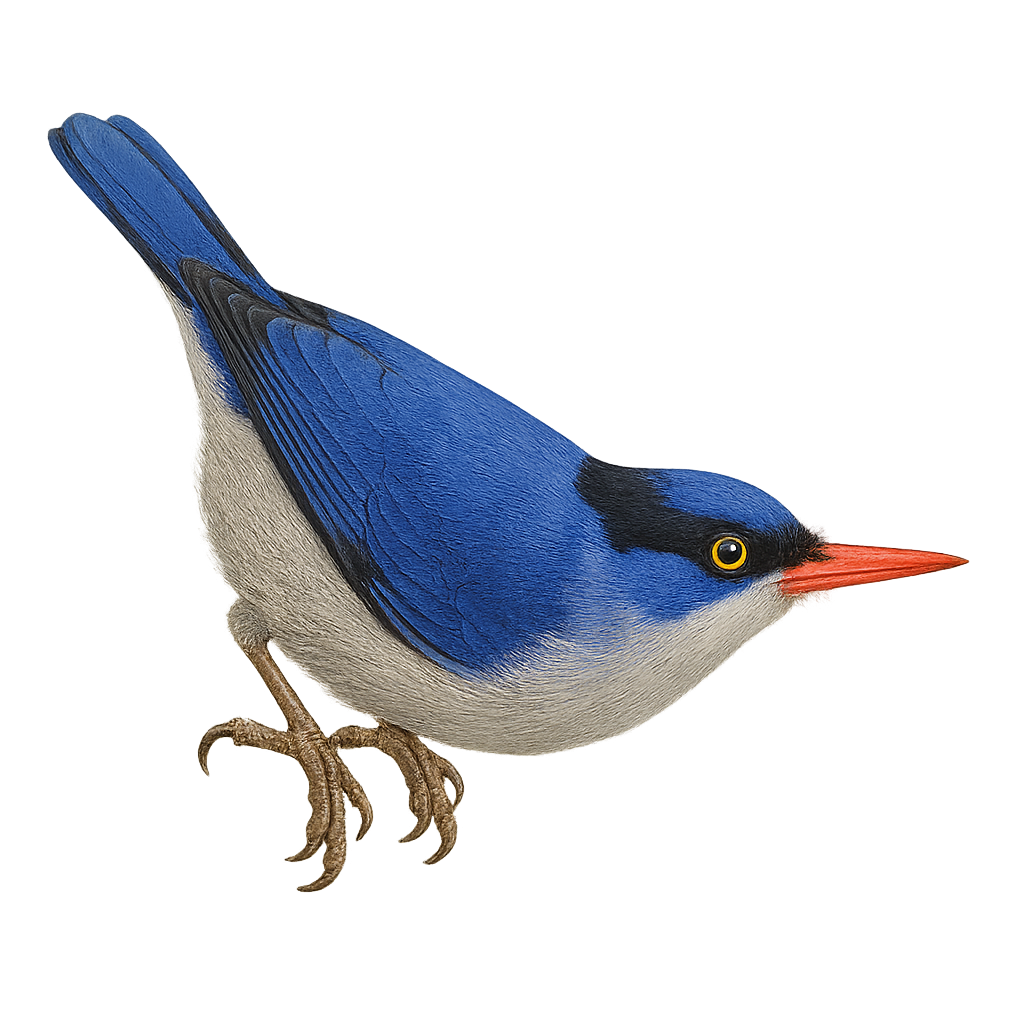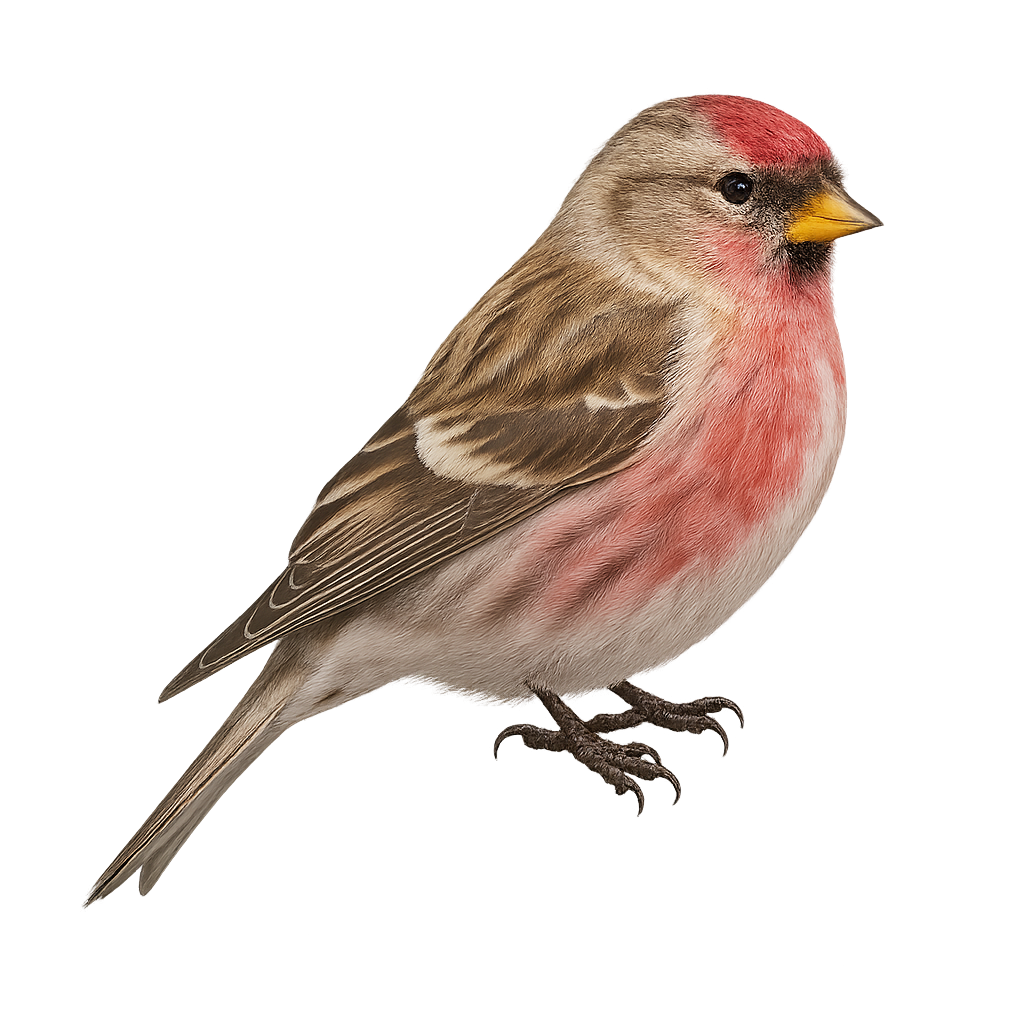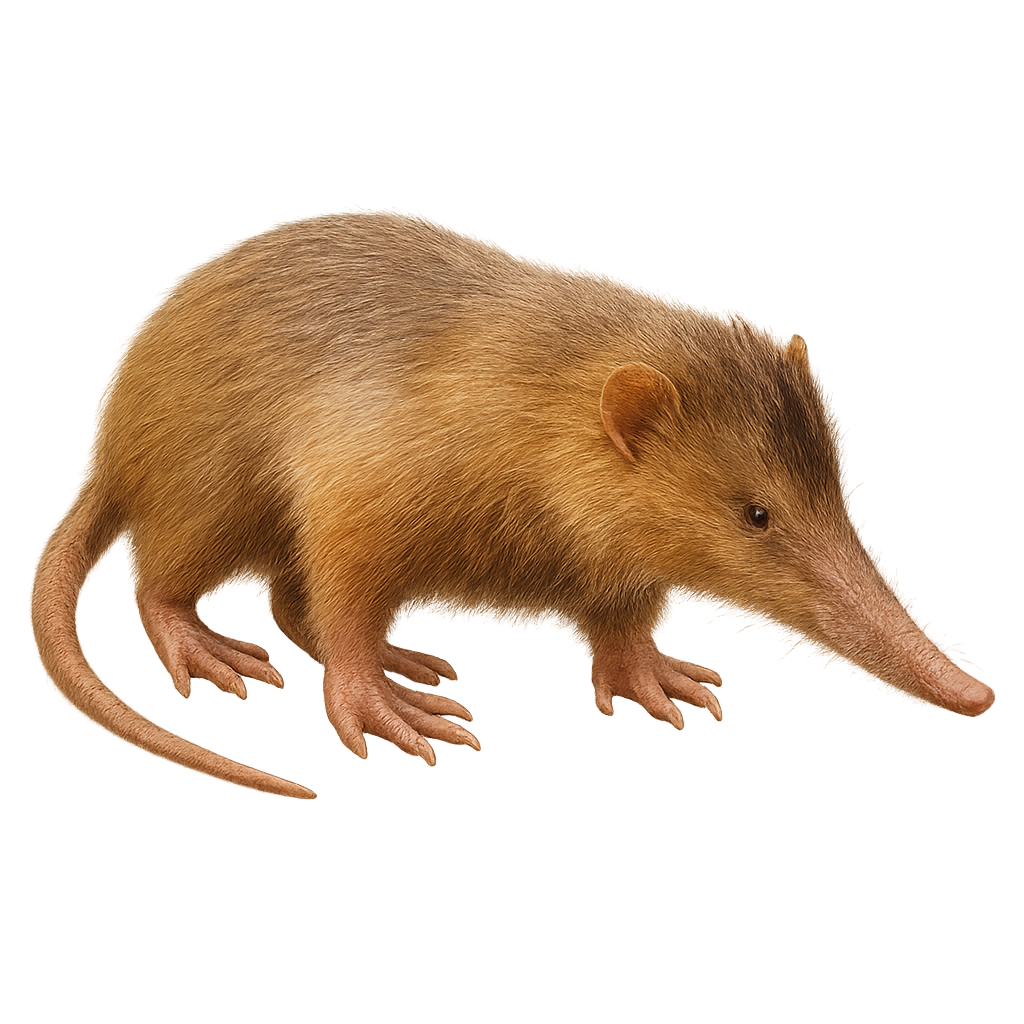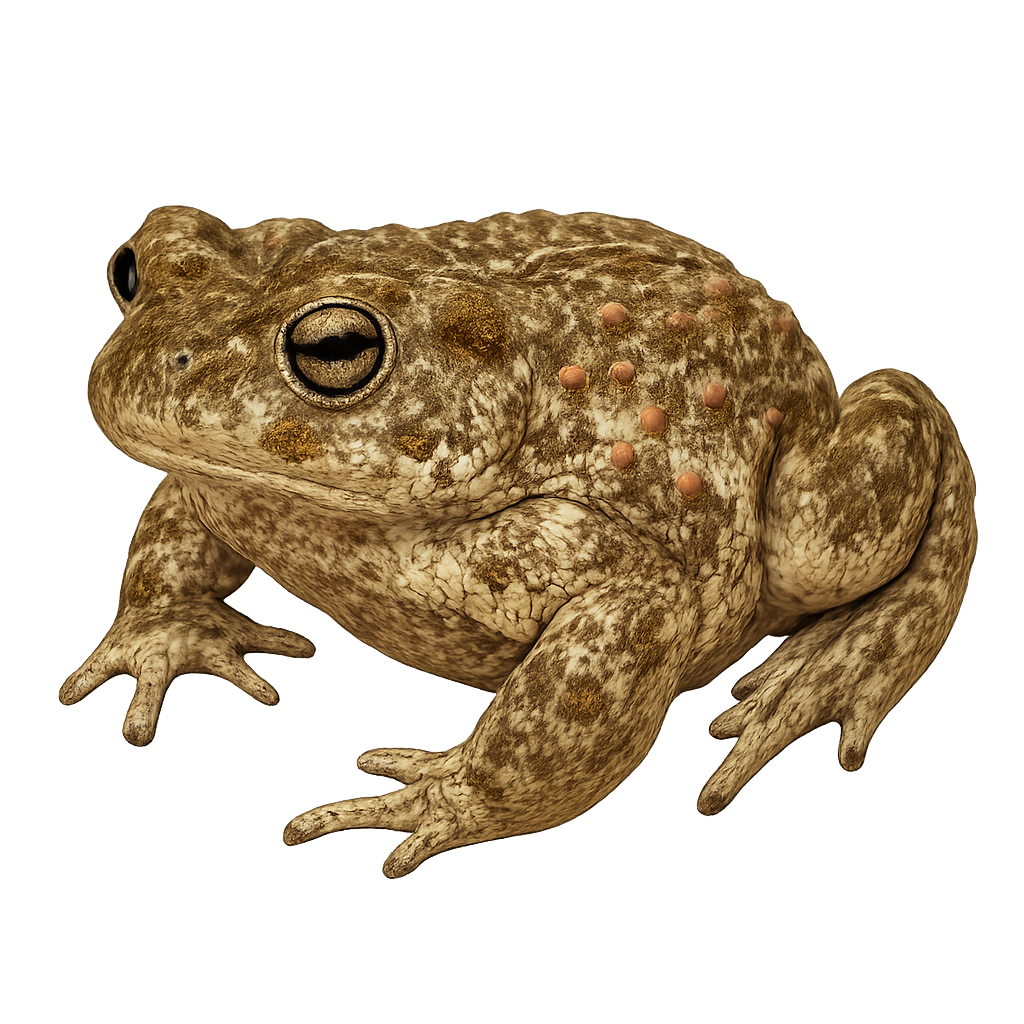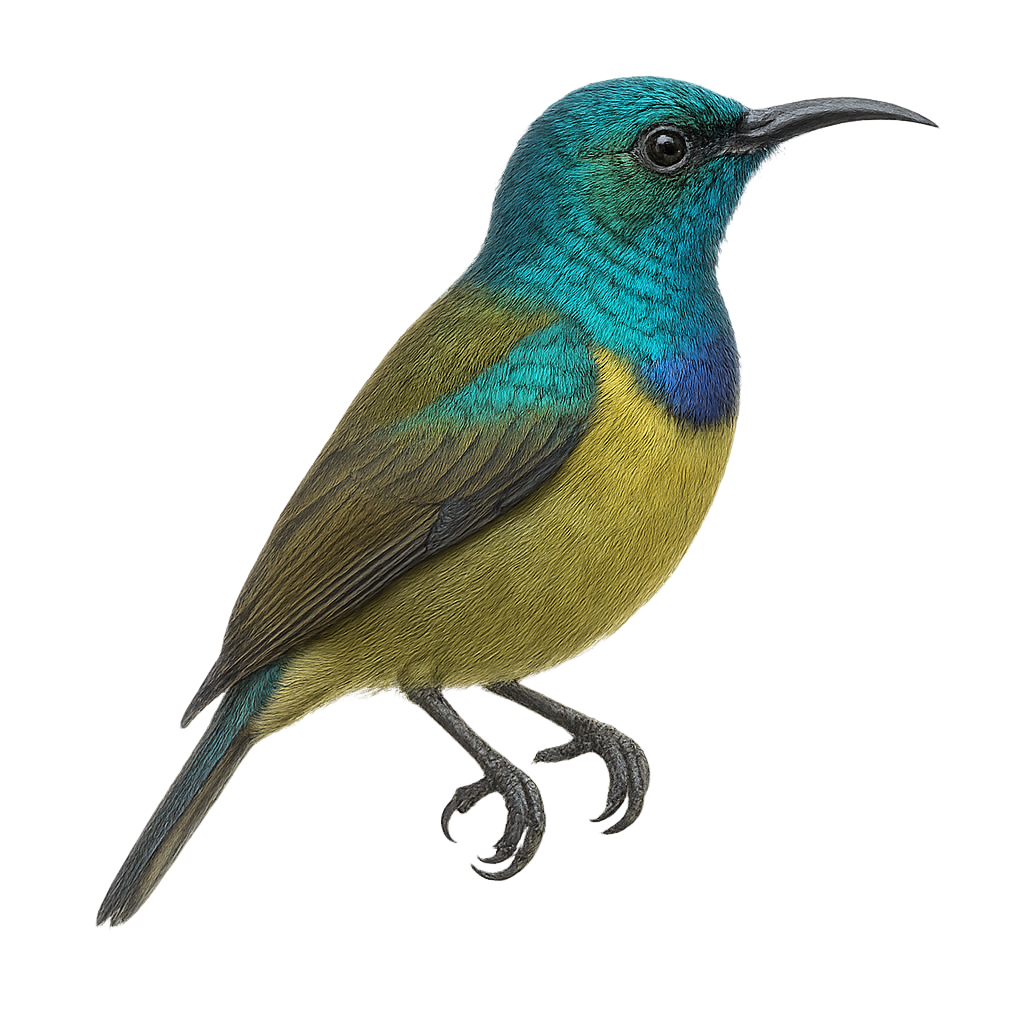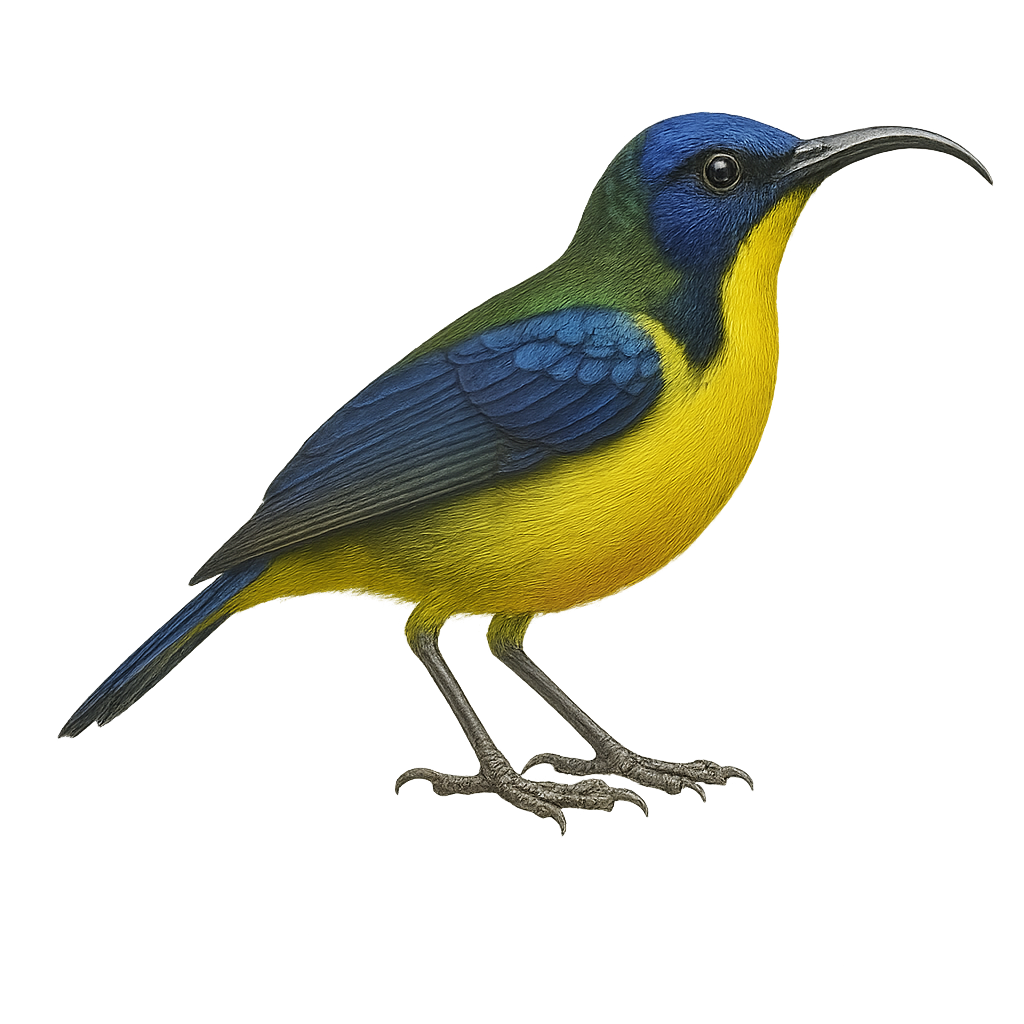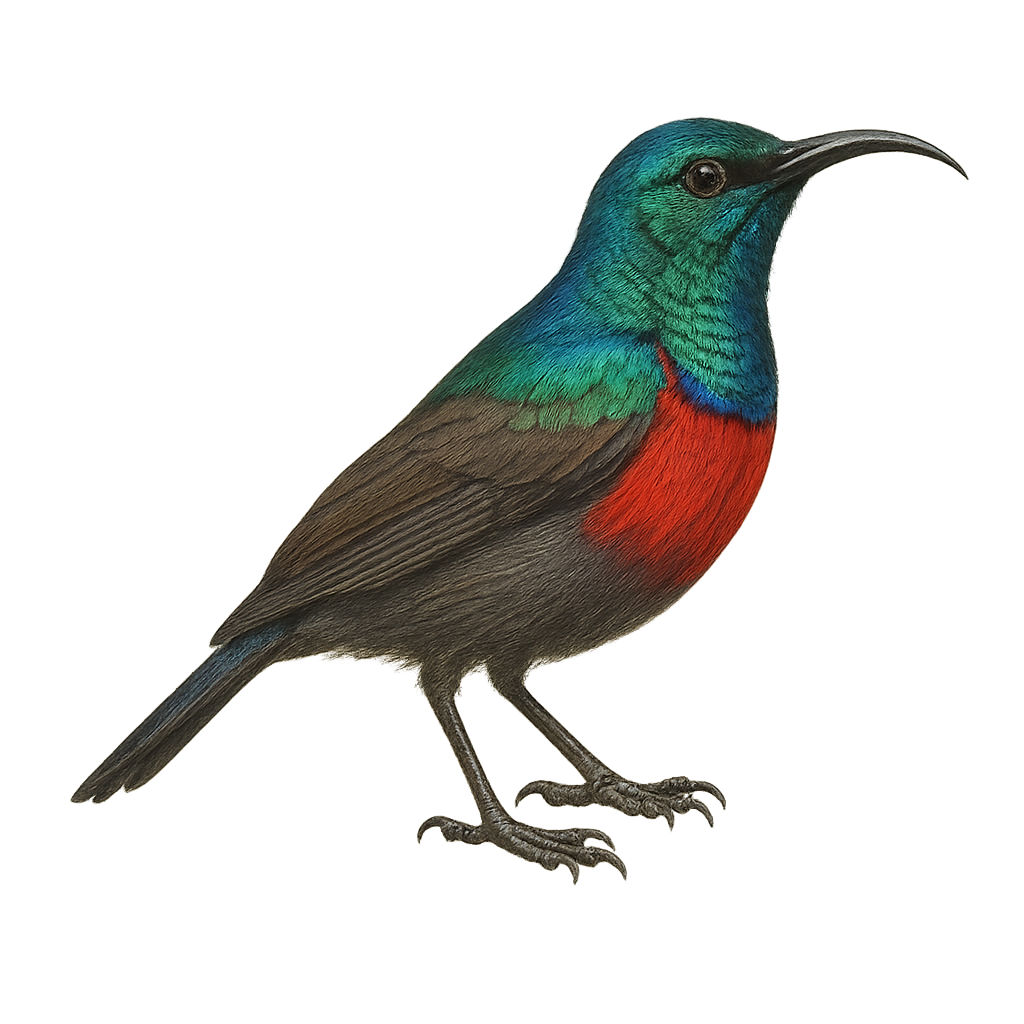The Snow Monkey, also known as the Japanese macaque, is a species of primate primarily found in the mountains and snowy regions of Japan. It measures about 50 to 60 cm in length, with a tail of 20 to 25 cm, and weighs between 10 and 14 kg. Its fur is dense and thick, typically brown or gray, with a reddish face that becomes more pronounced in males, especially during the breeding season. The Snow Monkey lives in complex social groups and is especially known for its social behaviors, notably bathing in hot springs during the winter, which has become one of the most iconic images of Japan. It primarily feeds on fruits, roots, seeds, and sometimes small animals. While its population remains relatively stable, this species sometimes faces habitat loss and conflicts with human populations.
The Golden Monkey, also known as the Roxellana Rhinopithecus, is a medium-sized primate found primarily in the mountains of China, particularly in the provinces of Sichuan and Gansu. It measures about 55 to 70 cm in length, with a tail of 50 to 60 cm, and weighs between 10 and 15 kg. Its fur is a bright golden color, with reddish hues and long hair around the face that forms a kind of mane. The Golden Monkey is primarily herbivorous, feeding on leaves, fruits, seeds, and occasionally small insects. It lives in organized social groups and is often observed in mountainous forests at high altitudes. While it is protected in certain regions, this species is threatened by habitat loss, deforestation, and poaching, which has led to a decline in its population.
The Saimiri sciureus, or common squirrel monkey, is a small arboreal primate native to South America. It is characterized by its dense, soft fur, primarily gray-olive with shades of yellow and white. Its head features a white facial mask contrasting with a black crown. This monkey is highly agile and spends most of its time in the canopy of tropical forests, feeding mainly on fruits, insects, and small vertebrates. Social groups typically consist of 20 to 50 individuals, allowing them to effectively protect against predators. Although they are primarily active during the day, they can sometimes be observed at dusk.
The Central American Squirrel Monkey, or Saimiri oerstedii, is a small primate primarily found in the tropical rainforests of Costa Rica and Panama. Recognizable by its reddish back and white face bordered with black, it is highly agile and spends most of its time in the canopy. This monkey lives in social groups that can number up to 70 individuals, which helps protect it from predators. It primarily feeds on fruits, insects, and small vertebrates. Although its habitat is threatened by deforestation, conservation efforts are underway to protect this iconic species of Neotropical biodiversity.
The Howler Monkey is a medium-sized primate found primarily in the tropical forests of Central and South America, notably in Mexico, Central America, and parts of the Amazon rainforest. It typically measures about 40 to 70 cm in length, with a prehensile tail of 50 to 75 cm, and weighs between 7 and 10 kg. Its fur varies from black to brown, and it has a large throat and powerful jaw, which allow it to produce extremely loud sounds, used to demarcate territory and communicate with other members of its group. The Howler Monkey is primarily herbivorous, feeding on leaves, fruits, and flowers. It lives in social groups and is primarily active during the day, moving slowly from tree to tree. While its population remains relatively stable, this species is threatened by deforestation and hunting.
The Alouatta palliata, commonly known as the mantled howler, is an arboreal primate primarily found in the tropical forests of Central and South America. Recognizable by its powerful howl that can be heard for miles, it plays a crucial role in seed dispersal, aiding forest regeneration. This monkey has a black coat with a distinctive golden mane. It lives in hierarchical social groups composed of several males and females. Howler monkeys are primarily herbivorous, feeding on leaves, fruits, and flowers. Their vocal behavior is essential for intra-group communication and territorial defense. Although their population is stable, deforestation poses a threat to their natural habitat.
The Macaca silenus, or lion-tailed macaque, is a primate endemic to the Western Ghats of India. Recognizable by its silver mane surrounding a black face, it is one of the most distinctive macaques. Its tail, reminiscent of a lion's, is another characteristic feature. This macaque primarily inhabits tropical rainforests, spending most of its time in the canopy. It is omnivorous, feeding on fruits, leaves, insects, and small vertebrates. Unfortunately, it is threatened by deforestation and habitat fragmentation, leading to a significant decline in its population. Conservation efforts are crucial for its survival.
The patas monkey, or Erythrocebus patas, is an African primate known for its exceptional speed, reaching up to 55 km/h, making it the fastest monkey in the world. It has distinctive reddish fur, a black face, and long, slender limbs adapted for running. Males are significantly larger than females. They primarily inhabit the savannas and semi-arid regions of West and East Africa. Their diet is omnivorous, consisting of fruits, seeds, insects, and small animals. Patas monkeys are diurnal and spend most of their time on the ground, although they can climb trees to feed or rest.
The Tibetan macaque, or Macaca thibetana, is a robust and imposing primate native to the mountainous forests of China. It is distinguished by its thick fur, ranging from golden brown to gray, and its bare, pinkish face. Males are significantly larger than females, sometimes reaching 13 kg. These macaques live in complex social groups led by a dominant male. They are omnivorous, feeding on fruits, leaves, insects, and occasionally small animals. Their habitat is generally between 800 and 2500 meters in altitude, where they adapt to climatic variations. Although their population is stable, deforestation and hunting pose potential threats.
The Callicebus personatus, commonly known as the masked titi monkey, is a medium-sized primate native to the tropical forests of southeastern Brazil. It is characterized by its dark face surrounded by dense, silky brownish fur. These monkeys live in small family groups and are known for their strong social bonds, often seen grooming each other. They primarily feed on fruits, but their diet also includes leaves and insects. Their natural habitat is threatened by deforestation, leading to a decline in their population. Despite this, they sometimes adapt to fragmented forest areas.
The white-bellied spider monkey, Ateles belzebuth, is an arboreal primate primarily inhabiting the tropical forests of South America. Recognizable by its black fur and distinctive white face, it has long limbs and a prehensile tail that enable agile movement through the canopy. This social monkey lives in groups of up to 30 individuals, although they often split into smaller subgroups to forage. Primarily frugivorous, it also consumes leaves, flowers, and insects. Unfortunately, Ateles belzebuth is threatened by deforestation and hunting, leading to a decline in its population.
The Macaca sinica, commonly known as the toque macaque, is a primate species endemic to Sri Lanka. Recognizable by its tuft of hair on the top of its head, this monkey has a golden-brown coat with a lighter belly. It primarily inhabits tropical forests but also adapts to urban and agricultural areas. Highly social, it lives in hierarchical groups where females dominate. Its diet is omnivorous, consisting of fruits, leaves, insects, and occasionally small vertebrates. Unfortunately, deforestation and human expansion threaten its natural habitat, classifying it as vulnerable according to the IUCN.
Chlorocebus pygerythrus, commonly known as the vervet monkey, is a medium-sized primate found primarily in sub-Saharan Africa. It is characterized by its grey-green fur, black face surrounded by white hair, and long, slender tail. These monkeys are highly adaptable and can inhabit a variety of environments, from savannas to riverine forests. They are known for their intelligence and ability to adapt to urban settings. Vervets live in complex social groups where hierarchy and communication play a crucial role. They are diurnal, spending most of the day foraging for food, which mainly consists of fruits, leaves, and insects.
The sitatunga, or Tragelaphus spekii, is a semi-aquatic antelope found mainly in the marshes and wetlands of Central and East Africa. It is easily recognizable by its reddish-brown coat, vertical white stripes, and long spiraled horns in males. Sitatungas are well adapted to their aquatic habitat, with long, splayed hooves that allow them to move easily through swamps. They are primarily active at dawn and dusk, feeding on aquatic plants, grasses, and leaves. Sitatungas are shy and elusive animals, preferring to remain hidden in dense vegetation to avoid predators.
The White-breasted Nuthatch is a small bird with distinctive plumage, featuring a bright white breast, blue-gray back, and black cap. It is often seen climbing down tree trunks headfirst in search of insects and seeds. Its call is a nasal "yank-yank," easily recognizable. It primarily inhabits deciduous and mixed forests in North America. Although generally solitary, it can be seen in small groups outside the breeding season. The White-breasted Nuthatch is a resilient bird, capable of adapting to various habitats, including urban parks and gardens.
The pygmy nuthatch (Sitta pygmaea) is a small forest passerine, measuring 9–11 cm in length and weighing 8–12 g, identified by its slate-blue dorsal plumage, brighter blue crown, and contrasting white throat. Endemic to western North America’s ponderosa and Jeffrey pine forests, it forages for insects, seeds, and resin in bark crevices. Highly social, it forms stable family groups year-round and often clings upside-down on trunks and branches. The breeding season runs from 01.04–30.06; it nests in cavities, laying 5–9 eggs incubated for 14–17 days, with hatchlings emerging between 15.04 and 17.07.
The Eurasian nuthatch is a small woodland bird found primarily in mixed and deciduous forests across Europe and Asia. It is easily recognized by its blue-grey and orange plumage, light belly, and distinctive black mask around its eyes. This bird is particularly known for its ability to climb upside down on tree trunks, allowing it to reach areas inaccessible to other birds. It primarily feeds on insects, seeds, and nuts.
The Velvet-fronted Nuthatch is a small, colorful bird, primarily blue with a distinctive yellow cap. It is often seen in the dense tropical forests of Southeast Asia, where it moves nimbly along trunks and branches in search of insects and seeds. Its social behavior is notable, as it often travels in small groups, emitting high-pitched calls to communicate. Although primarily arboreal, it occasionally descends to the ground to forage. Its ability to climb headfirst down trees is characteristic of nuthatches. The Velvet-fronted Nuthatch is a resilient bird, capable of adapting to various forest habitats, but remains vulnerable to deforestation.
The Plain Xenops is a small bird from the Furnariidae family, primarily found in the tropical forests of Central and South America. It measures about 12 cm in length and is characterized by its brown plumage with lighter shades on the belly. Its slightly curved beak allows it to probe tree bark for insects, its main food source. This bird is often seen climbing tree trunks, much like woodpeckers. Although discreet, its high-pitched, repetitive song can be heard through the dense canopy. The Plain Xenops plays an important role in the ecosystem by helping control insect populations.
The Common Redpoll, Acanthis flammea, is a small finch in the Fringillidae family. It is easily identified by its brown streaked plumage and bright red cap. Males often have a rosy breast, while females are duller. This small bird is well adapted to cold climates and is primarily found in boreal forests and arctic regions. It mainly feeds on seeds but also consumes insects in summer. The Common Redpoll is a gregarious bird, often seen in flocks, especially in winter. It is known for its irregular migrations, influenced by food availability.
The Hispaniolan solenodon (Solenodon paradoxus) is a venomous insectivorous mammal resembling a shrew, endemic to the Caribbean island of Hispaniola (Dominican Republic and Haiti). It inhabits moist forests, shelters in burrows or under logs, and feeds primarily on arthropods, worms, molluscs and small vertebrates. Crepuscular and nocturnal, it moves in a zigzag gallop and produces varied vocalizations for communication and defense.
The yellow-bellied toad is a small amphibian 30–40 mm long, with olive-brown dorsal coloration and bright yellow belly mottled with black. It inhabits temporary shallow wetlands at forest edges and meadows, feeding on insects, spiders and worms. During breeding, males emit high-pitched calls near shallow pools and females lay clusters of eggs on aquatic vegetation.
The Green Sunbird, or Anthreptes rectirostris, is a small, colorful bird from the Nectariniidae family, primarily found in West and Central Africa. It is distinguished by its vibrant plumage, often metallic green in males, and its slender, straight bill adapted for nectar feeding. This nectarivore is commonly seen in tropical rainforests, forest edges, and occasionally in gardens. Its song is a mix of trills and melodious chirps. Although primarily nectarivorous, it supplements its diet with insects, especially during the breeding season. The Green Sunbird plays a crucial role in plant pollination, thus contributing to the biodiversity of its habitat.
The Red-chested Sunbird, or Cinnyris erythrocercus, is a small, colorful bird belonging to the Nectariniidae family. It is primarily found in East Africa, particularly in Uganda, Kenya, and Tanzania. This sunbird is distinguished by its vibrant plumage: males have a bright red throat and chest, contrasting with a metallic green back and white belly. Females, on the other hand, display more subdued tones with olive-brown plumage. These birds are often seen in gardens, open forests, and savannas, where they primarily feed on nectar, but also insects. Their flight is fast and direct, and they are known for their melodious and complex song.
The Collared Sunbird, a small bird with dazzling plumage, is a gem of African forests. Its metallic green back contrasts with its bright yellow belly, and its distinctive collar adds a touch of elegance. Measuring about 10 cm, it is agile and fast, moving from flower to flower to feed on nectar, supplemented by insects. Its thin, curved beak is perfectly adapted to its diet. This sunbird is often seen in pairs or small groups, emitting melodious songs. It primarily inhabits humid tropical forests but also adapts to gardens and plantations. Although generally not very shy, it remains cautious of threats.
The Scarlet-chested Sunbird, Chalcomitra senegalensis, is a striking bird from the Nectariniidae family. Males are easily identified by their vivid red chest and metallic green back, while females are more subdued with brown and gray tones. They primarily feed on nectar but also consume insects, especially during breeding season. Found in diverse habitats from savannas to open forests, they often stay near water sources. Known for their swift flight and melodious songs, these birds are a delight to observe. Although their conservation status is currently of concern, they remain relatively common within their range.
The Variable Sunbird, or Cinnyris venustus, is a small, colorful bird belonging to the Nectariniidae family. It is primarily found in sub-Saharan Africa, where it inhabits various environments such as savannas, open forests, and gardens. This sunbird is recognizable by its vibrant plumage, with metallic green hues on its back and yellow shades on its belly. Males often display brighter colors than females. They primarily feed on nectar but also consume insects to supplement their diet. These birds are known for their fast and agile flight, allowing them to move easily between flowers.
The Purple Sunbird, or Cinnyris asiaticus, is a small bird found mainly in South Asia. Known for its vibrant plumage, especially in males, it displays metallic colors ranging from blue to violet. The female, on the other hand, has more subdued tones, with an olive-brown plumage. These birds are often seen in gardens, open forests, and urban areas, where they primarily feed on nectar, but also insects. Their slender, curved beak is perfectly adapted for extracting nectar from flowers. The Purple Sunbird is a very active bird, often seen flitting from flower to flower, playing a crucial role in plant pollination.
The Lina's Sunbird, scientifically known as Aethopyga linaraborae, is a bird from the Nectariniidae family, endemic to the Philippines. This small bird, measuring about 10 cm in length, is renowned for its vibrant plumage, displaying a spectrum of colors from red to metallic green. Males feature a striking red throat and a shiny green back, while females are more subdued with olive-green hues. They primarily inhabit tropical rainforests and mountainous regions. Their diet mainly consists of nectar, but they also consume insects to supplement their nutrition. Lina's Sunbird plays a vital role in the pollination of local plants.
The Preuss's Sunbird is a small, brightly colored bird primarily found in the humid tropical forests of Central Africa. It is recognizable by its vibrant plumage, with metallic green and blue hues on its back and head, and a bright red chest. Males and females exhibit marked sexual dimorphism, with females having duller colors. This nectarivore primarily feeds on nectar but also consumes insects to supplement its diet. It plays a crucial role in the pollination of tropical plants. The Preuss's Sunbird is an active and agile bird, often seen darting quickly from flower to flower.


